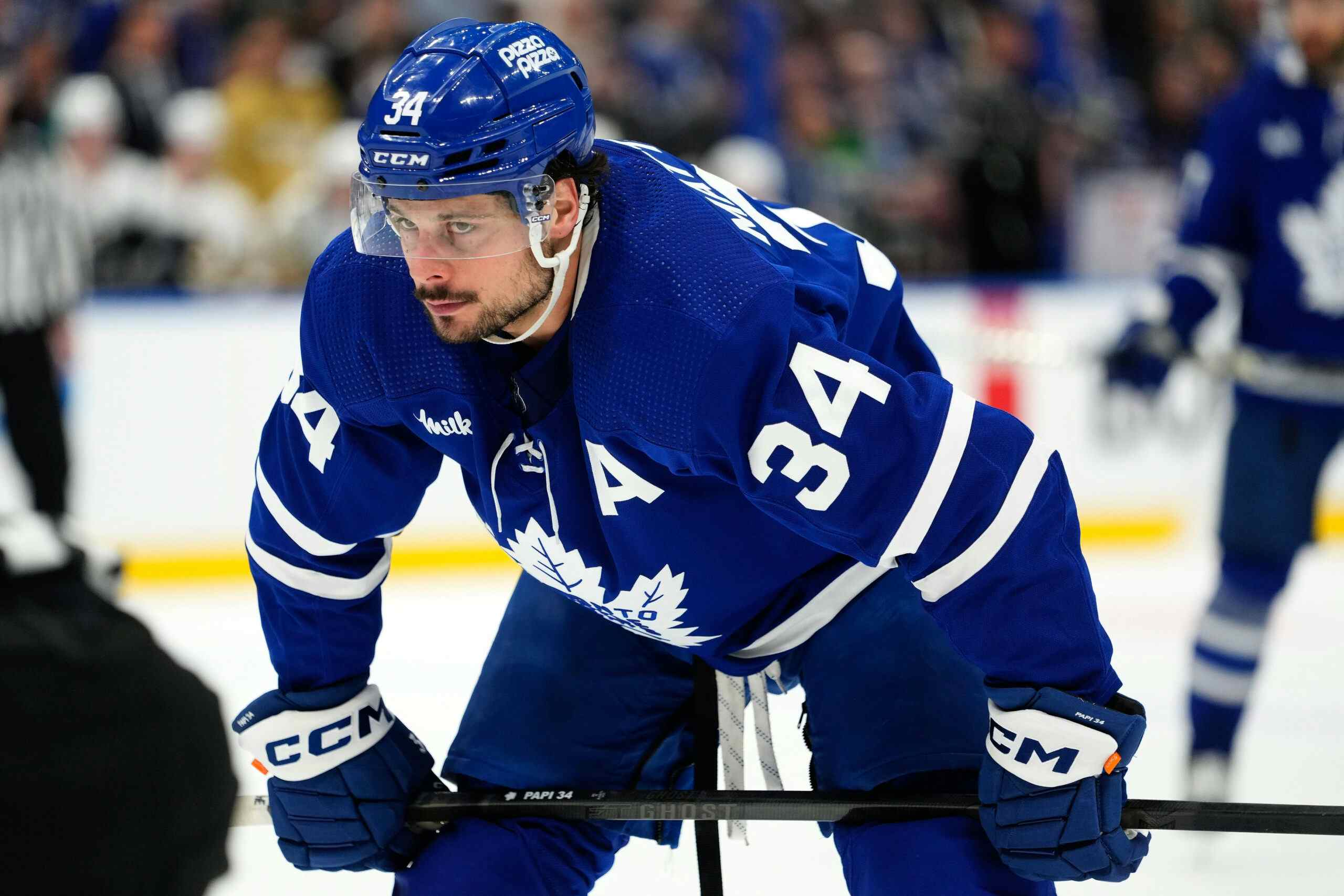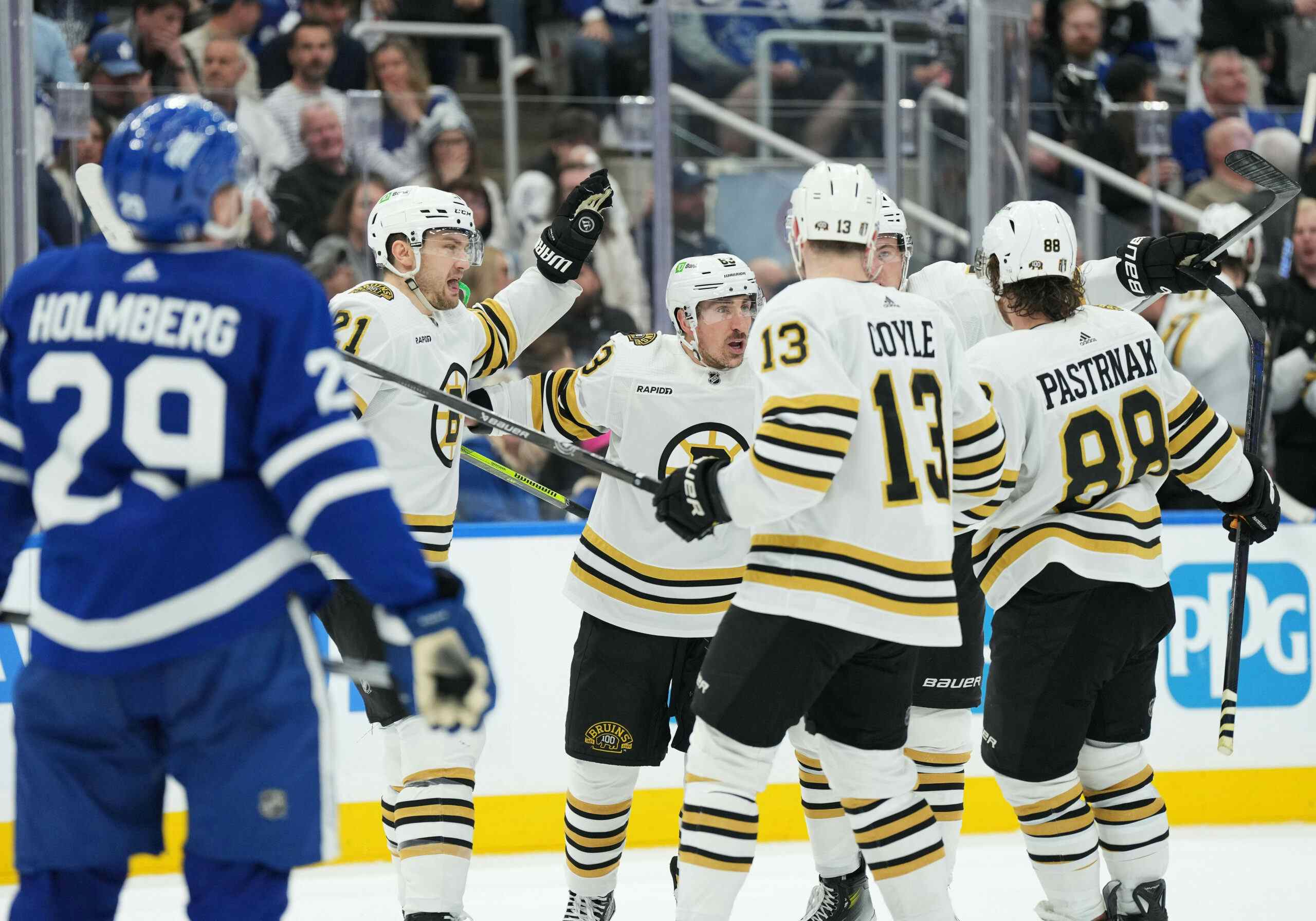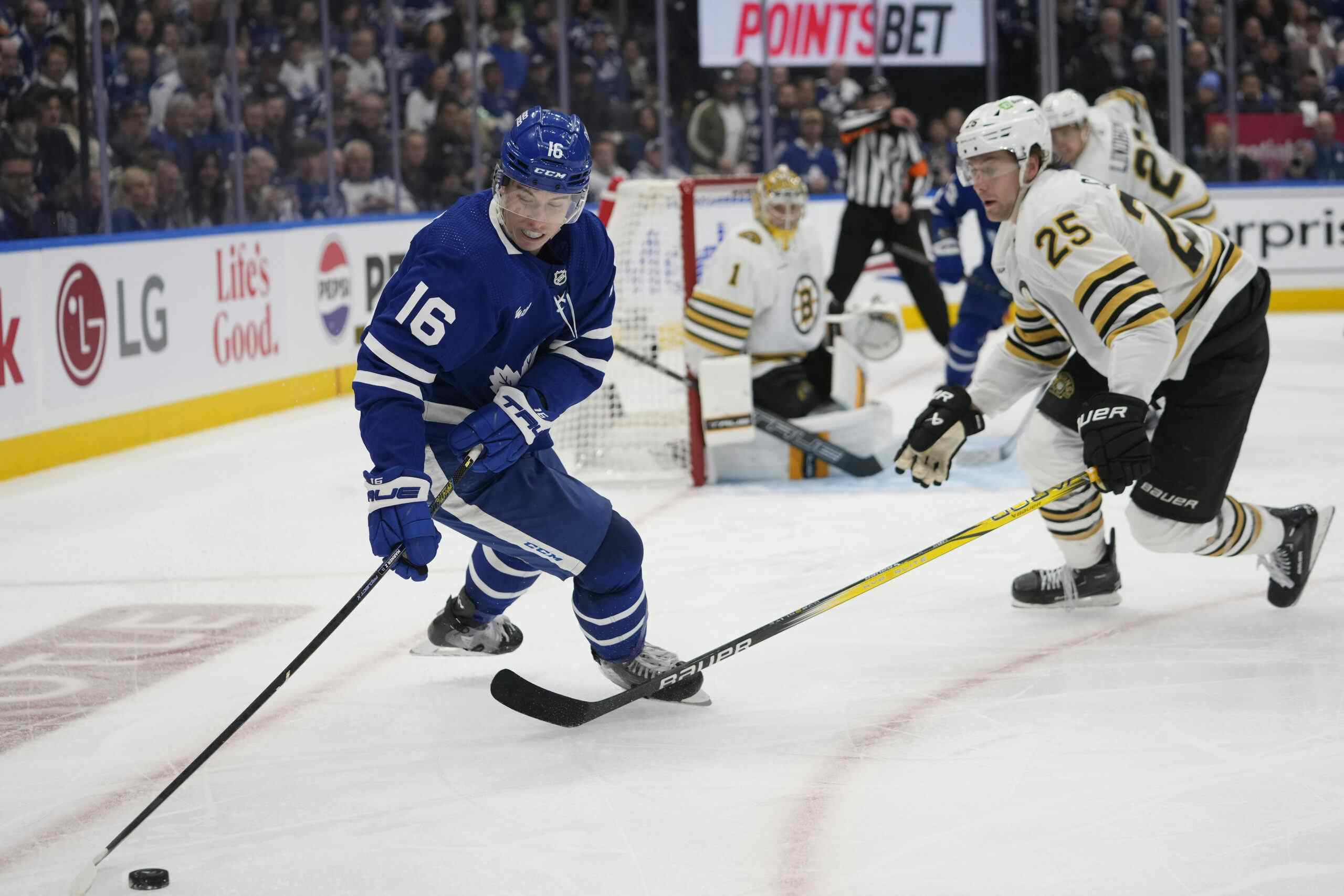Navigating through Toronto’s salary cap wilderness

Photo Credit: John E. Sokolowski/USA TODAY SPORTS
The Toronto Maple Leafs are the richest team in hockey, and if the league still had no salary cap, I don’t think a single fan or local media member would care how much they were spending on their players. But as long as a cap exists, available dollars are assets, and building a team is just as much about beating the market as it is about identifying talent.
Certainly, the Leafs are closer to realizing the efficiency dream than they’ve ever been, but there are still a couple of shorter-term trees to pass through before they get entirely out of the woods.
Jared Cowen
What’s at stake: A spread of $3.85 million
Shortly after the Leafs acquired Jared Cowen, the hulking defenceman sure acted as if that he was ready to play if Toronto wanted him to. Lou Lamoriello, on the other hand, saw opportunity in Cowen’s buyout terms, which allowed the team to get a $700,000 cap boost if they were to part ways with the front-loaded part of his deal.
Suddenly, Cowen wasn’t very healthy after all and claims that he can’t be bought out because he’s still in a state of repair, having undergone surgery after being cleared to play with the Marlies should the Leafs have decided to play him after all. Obviously, the 25-year-old has a lot at stake here; due to the nature of his contract and his age, a buyout would remove $3 million from his potential paycheques. Given that a healthy Cowen wouldn’t fetch much on the open market, if an NHL job at all, it makes sense that he’s fighting for what might be his last payday.
An arbitrator will decide whether he’s got a case or not. If he doesn’t, his buyout will create a surplus. If he does, not only will the Leafs be stuck with his contract, they’ll likely have to put him on regular IR to start the year, saving a roster spot but none of his $3.1 million salary. Eventually, if he’s ever cleared to play again, he can be waived and assigned to the Marlies to save $950,000.
Best case cap scenario: Leafs win the case, gain $700,000 by buying out Cowen
Worst case cap scenario: Leafs lose the case, forced to keep $3.1M on the books until cleared to play
Stephane Robidas
What’s at stake: $0
Nothing’s really changed here. Robidas doesn’t have a leg to stand on as far as making the Leafs this year, mostly because one of his legs literally isn’t in good enough shape to play hockey on. Ironically, while Long-Term Injured Reserve has been nicknamed “Robidas Island” by many, the 39-year-old isn’t a resident, and probably won’t be next year. The Leafs will place Nathan Horton in that role, and could only double dip if they expected to exceed the salary cap by more than $5.3 million on opening night. That doesn’t appear to be a likely scenario unless arbitrators confuse Martin Marincin with PK Subban later this week.
Due to the nature of his deal, a buyout during the second window would save them no salary cap money, and would instead remove $333,333 from Robidas’ real world paycheques. The Leafs pride themselves on ethics and would do no such nickle and diming here. If he shows up in a week and says he’s healthy and wants to play, on the other hand…
Only case cap scenario: Robidas is placed on regular injured reserve to gain a roster spot, but his full $3 million counts towards the cap for one last year.
Joffrey Lupul
What’s at stake: A spread of $950,000
Lou Lamoriello suggested back in April that Joffrey Lupul’s future is “unknown”, giving credence to the theory that he’s played his last game as a member of the Leafs. But as Lupul told Steve Simmons back in June, he’s eager to get in shape and return to the lineup, leading to what could be a standoff.
Unlike Robidas, who is either actually hurt or understands that he wouldn’t get another contract as a 40-year-old subpar player with a bad knee anyway, Lupul might be both healthy and a person with something at stake here. He won’t sit back and accept an IR placement for the final two years of his deal.
As such, Toronto’s only options if he’s healthy, short of finding a trade partner, are to play him in the lineup (which might be a good move for expansion draft reasons) or waive him in favour of a Marlies winger. Toronto would only get $950,000 in savings from that, though, minus the cost of the player.
Best case cap scenario: Assuming no trade, Lupul is placed on waivers, clears, and is replaced with Josh Leivo, his closest comparable player on the Marlies with the lowest possible cap hit at $612,500, saving the team $337,500.
Worst case cap scenario: He ends up not able to play and is placed on regular IR, Leivo gets called up, costing the team $612,500.
Nathan Horton
What’s at stake: Up to $5.3 million
As DragLikePull wrote on this fine website a while back, LTIR is not “hey, here’s a cap bonus”. It’s used as a buffer at the start of the season for teams that had to go over the cap before opening night, and once it’s triggered for that player, it’s locked in. If Nathan Horton is placed on LTIR and the Leafs only have gone a handful of loonies over the salary cap in replacing him, they aren’t really gaining much. This is also why you won’t see Robidas, Cowen, and Lupul (if he’s hurt) on there; it’s unlikely that the Leafs will be more than $5.3 million in surplus on opening night, let alone $16.25 million.
For Toronto to maximize their LTIR situation, they’d be wise to call up their most expensive waiver-exempt players and send down their cheaper ones. Unfortunately, the present roster already more or less looks like that, from a cap hit perspective.
Best case cap scenario: Marcincin and whoever the backup goalie get them over the cap, they dress the biggest roster they possibly can opening night, and start making slashes after.
Worst case cap scenario: Toronto starts the season just barely under the cap and doesn’t save anything.
The Supporting Cast
What’s at stake: Many millions, depending on the players.
We’ll use the Sens Squad as an example. While the Leafs didn’t retain salary in the Dion Phaneuf trade, they definitely took some back. Milan Michalek and Colin Greening are useful players, but with Michalek making $4 million and Greening making $2.65, it’s hard to label those contracts as particularly great. Brooks Laich also fits the description at $4.5 million but seems to be likely to stay through the year as a mentor and captain-in-spirit for the younger players.
The easy solution is to trade these players as soon as possible and replace them with cheap Marlies wingers that are being pushed out of the lineup by the logjam right now; Connor Brown and Brendan Leipsic are my personal candidates. But one must remember that cap hits work on a day by day basis, and the longer it takes for them to shed those players, the less those savings are.
If the Leafs were to trade the two ex-Sens before opening night and make those two call-ups, for example, they’d save $5,308,001 over the course of the 180-day season. But that number starts to crash fast; $4.77 million if done at Halloween, $3.51 million at Christmas, $2.72 million if done on the anniversary of their arrival, and $2.44 million if they wait until the end of February. It’s a race against the clock, should they decide to move them. This also goes for players like Laich, Tyler Bozak, Roman Polak, or anybody the Leafs would look to trade. You’ll see why this matters in the point below.
Best case cap scenario: The Leafs start fire-saleing their surplus players as soon as possible and replace them with Marlies forwards.
Worst case cap scenario: They hold out, either in keeping them, or going the distance to the trade deadline.
The Big 3 Rookies
What’s at stake: Up to 4.55 million
Unless the team has a bunch of moves up their sleeve before opening night, they’re likely starting the season at a cap flexibility of near-zero. Marincin and a backup goalie aren’t going to be enough to push the LTIR limit very high up, after all.
But that’s fine. The Leafs are a transition team and won’t be looking to buy, right?
No, but they do have three of the best rookies on the planet joining the team. Auston Matthews, William Nylander, and Mitch Marner are here to score goals and chew bubble gum, and they’re all out of the latter. All three have performance bonuses attached to their ~$900,000 salaries, as they should. Matthews could earn up to $2.85 million more, while Nylander and Marner could make an extra $850,000.
The issue is that these bonuses aren’t taken into account until the end of the year, and won’t be considered under Horton’s LTIR. There’s a much greater than zero chance that these three play well, earn bonuses, and they end up counting as overages on next year’s cap if Toronto doesn’t make some space before opening night. Granted, they have a ton of players coming off the books next year and not a ton of extending/renewing to do, so that might not be the end of the world, but it’s always nice to not start a season at a cap disadvantage.
Best case cap scenario: The three musketeers all spend exactly one season looking like busts and miss all of their bonuses.
Worst case cap scenario: All three of them are the elite prospects that we thought they’d be, take the NHL by storm, and cost the Leafs a bunch of money next year. $2.55 in Schedule As is almost a gimmie; Matthews’ Schedule Bs are a little up the air.
The Big Picture
Toronto is in a weird cap situation heading into next year, especially when you consider that we’re looking at a team that just finished in 30th. There’s enough money being invested into broken bones to build a house in the Bridle Path, a bunch of bad deals on their last legs, and three hyper-skilled rookies looking to make a bit more than their expected salary.
It’s going to be interesting to see how Lou Lamoriello, Brandon Pridham, and the rest of the gang approach this for the next few months. They’ll surely be in a good enough situation to dress a functioning roster on opening night but could see that come back to bite them a bit next year. Do they treat this as the last punishment of the old guard and look to 2018/19 as their year to finally (Kessel retention aside) be in cap wonderland? Or do they get aggressive now and try to clean things up before the puck drops? Only time will tell, but I’m curious to find out what the process here will be.
Recent articles from Jeff Veillette





